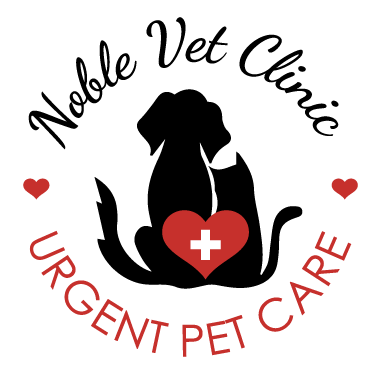| We offer emergency and urgent care. We are more reasonable than the ER. We are faster than the ER. Guaranteed! |

Noble Vet Clinic36 Barnes Ct.Hayward, CA 94544(510) 537-3292 |
Noble Veterinary Clinic
(510)703-0319
noblevet.com
Dental Pain in Dogs and CatsEvolution has taught our pets to hide their pain. In the wild, an animal seen as being weak or distressed stands little chance of survival. Dogs are pack animals—they live together in a cooperative society, but within that group, there is competition, with advantages bestowed on the top ranking animals. Therefore, animals at the top of the hierarchy want to stay there and animals lower down are looking for opportunities to move up or at least to maintain their position. Any sign of weakness is likely to bring a challenge from below and so there is an incentive to carry on as if nothing is wrong. An animal in great distress may be seen as a liability to the pack and so may be cast out to fend for itself. In short, complaining will bring no benefit and may invite problems. A dog’s best strategy is to put up with the pain and act fit and healthy. Cats are much less social, being solitary little predators. They are also prey to larger predators. Therefore, they also will try to look as fit and vigorous as possible, so as not to advertise themselves as an easy meal. Complaining does them no good and could do them harm. If an animal has a sore tooth, that is one problem. If, as a result of the sore tooth, the animal stops eating it will become very hungry and so now it has two problems. Fasting is a poor survival strategy, and so rather than fasting, the animal eats, despite the pain. They may have to chew on one side of the mouth or eat without chewing much at all, but they will eat if at all possible. Many humans will continue with their favorite activity despite injury. Runners will run with torn ligaments, tennis-players will play through tendonitis and so on. Many dogs are fanatical about their chewing and so will chew despite broken and infected teeth. Again, close observation may reveal that the animal is chewing on one side only or is avoiding the sore area. Some dental conditions, such as tooth fracture, occur acutely. Others, such as periodontal disease develop gradually. Therefore, the pain comes on slowly, allowing the animal time to adapt and accommodate the pain. For many pets, the owners will simply report that the animal is slowing down as it is getting older. Though this is not a specific sign of dental disease, it is reason to examine the pet carefully for the cause of its decline. So whether the animal is showing obvious signs of oral pain or not, you can be confident that conditions that would cause pain in a human mouth will be causing pain in the pet’s mouth. Pets do not always tell you when they are feeling poorly, but they will let you know when they are feeling better. Very often, when one rehabilitates a pet with a 'bad mouth', the owners will report a dramatic improvement in the pet's attitude and activity level. This last point is a bit anecdotal, but it has happened so often and consistently that I am very confident in saying that even if we do not increase the quantity of life with proper dental care, we absolutely will increase the quality of life. Fraser A. Hale, DVM, FAVD, Dipl AVDC We believe in healthy dental care at Noble Vet. Please come in for a periodontal score "Report Card" and allow us to help your pet's mouth be as healthy as it can be. We use the most thorough procedures and safest anesthetics to perform a COHAT = Comprehensive Oral Health Assessment and Treatment as well as follow up with preventative brushing demonstrations along with other products used to keep their teeth clean. |